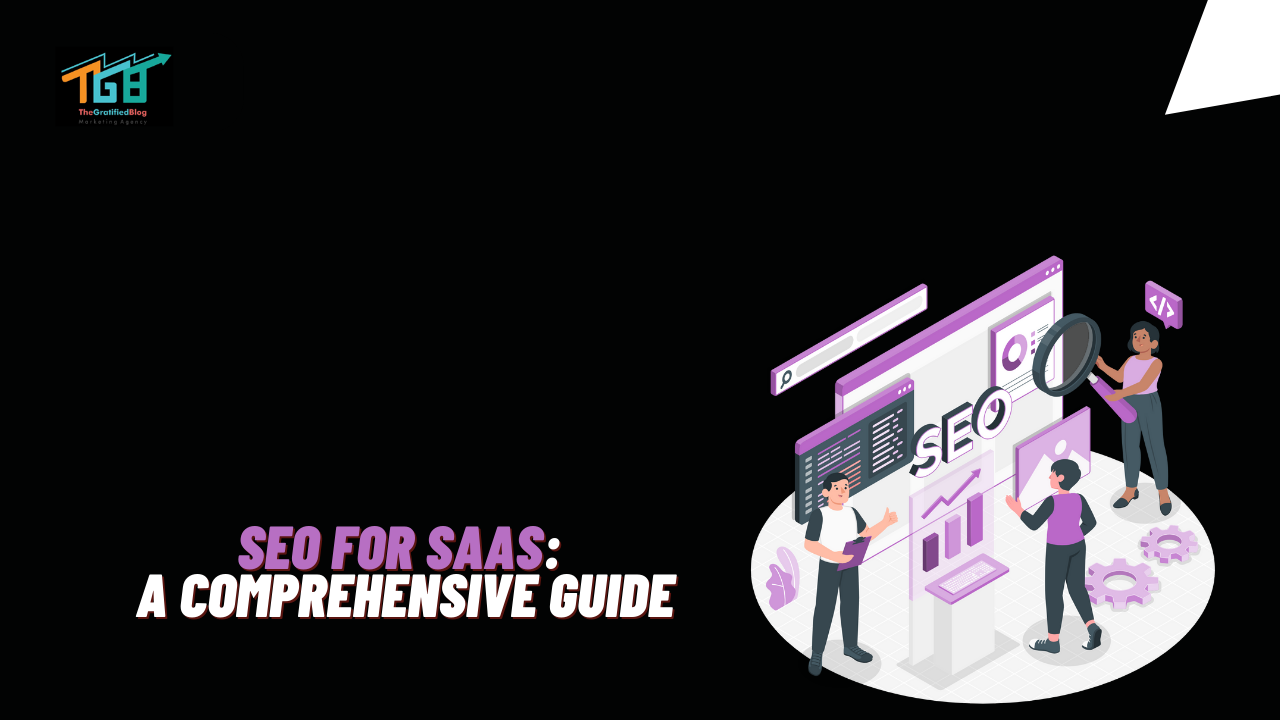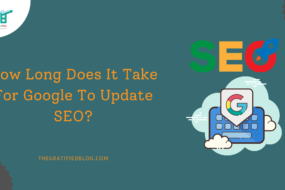
In today’s highly competitive digital marketplace, businesses Continuously explore methods to gain a competitive advantage over their rivals. For many Software as a Service (SaaS) companies, the challenge is building great Software and attracting customers within an increasingly congested landscape.
One solution to this problem is search engine optimization (SEO), which entails optimizing a website to achieve higher positions in search engine results pages (SERPs). By improving their ranking on SERPs, SaaS companies can increase their visibility to potential customers,
Increase website traffic and convert a higher number of visitors into paying customers. In this blog, we’ll explore SEO For SaaS in detail, its advantages, and some tips to improve your SaaS website’s search engine ranking and drive more organic traffic to your site.
What Is SEO For SAAS?
SEO For SaaS is a strategy that focuses on increasing organic traffic for a Software as a Service (SaaS) company’s website by earning top rankings on search engine results pages (SERPs)
Moreover, A study by SimpleTiger showed that implementing an effective SaaS SEO strategy can increase organic traffic immensely.
Why SaaS Businesses Should Use SEO
Implementing an effective SEO strategy for your SaaS business has several benefits. Some of the key benefits of SEO For SaaS include the following:
It Raises The Brand’s Position
One of the essential advantages of SEO for SaaS companies is increased brand awareness. Consider how much attention your brand could receive if it appears at the top of search results for terms related to the nature of your business.
Even if searchers do not click on your pages, they physically notice and remember your brand. Enhance your presence in search engine results pages (SERPs) and facilitate potential customers’ discovery of your website. Your brand online By optimizing your website’s content and structure for relevant keywords and phrases.

It Facilitates Traffic Growth
One of the most significant advantages of SEO for SaaS is the ability to scale user growth. Enhancing your website for search engines can boost traffic, leading to more signups, trials, and, eventually, more paying customers.
To better understand this, consider the following example. A buyer is looking for a website design tool. He then searches for website design on Google and finds your brand’s articles near the top of the results.
The buyer trusts Google, and Elevating your position in search engine results enhances your credibility with customers. It influences their purchasing decision. This is how SEO helps prospects move faster through the sales funnel and scale user growth.
It Lessens Cost Per Acquisition
One of its most significant advantages is that it can significantly lower your cost per acquisition (CPA). Paid ads generally require payment each time someone clicks on the ad. The more clicks you get, the more you’ll have to pay.
If you use competitive search terms, each click can cost you a lot of money, and your budget will slowly deplete each month. SEO is a far superior alternative. Your initial investment continues to drive traffic, awareness, and revenue for a long time. It makes SEO one of the most effective marketing channels for lowering CPA.

Some Of The Best Effective Steps To Create Your SaaS SEO Strategy
Creating an effective SEO strategy for your SaaS business requires combining technical knowledge, industry expertise, and a deep understanding of your target audience. Here are the critical steps to developing your SaaS SEO strategy:
Develop Your Business Mission
To ensure success in your business, especially in the competitive landscape of the SaaS industry, Initiating the process by clearly outlining your goals is essential, with a focus on SEO for SaaS. Without clear goals, you will be shooting in the dark,
And even if you hit the target on a few occasions, such as a viral blog post, that traffic will only benefit your business if it is sustained or directed towards a larger goal, such as improving your SEO for SaaS strategy.
A perfect goal for your SaaS business is razor-sharp, quantifiable, and based on time. Therefore, it is essential to spend some time researching and comprehending the various types of SEO metrics specifically relevant to the SaaS industry and how they relate to your business goals. There are many SEO metrics to track
But the most important ones for SaaS businesses include organic traffic, revenue, conversions, goals, search, and local visibility, click-through rate (CTR), exit rate, pages per session, average page load time, keyword rankings (including “SEO for SaaS”), domain authority, backlinks, and conversions.
By tracking these metrics, including the keyword “SEO for SaaS,” you can get an accurate picture of your SaaS business’s SEO performance, continuously improve your strategy, and ultimately increase rankings and ROI, specifically in the SaaS market.
Therefore, it is crucial to determine which metrics, including the keyword “SEO for SaaS,” are most important for your SaaS business goals and monitor them effectively to drive success in your industry.

Source: hubspot.com
Define Your Readership & Set Personas
To achieve success in your SEO campaign for SaaS, it is essential to determine the identity of your ideal customer. By deeply understanding your target audience, including those interested in SEO for SaaS, you will enhance your ability to address their challenges effectively. One approach to accomplish this is through the creation of buyer personas.
Buyer personas are fictional representations of typical customers designed to capture their characteristics and behaviors. Since you operate as a SaaS company specializing in it, it is crucial to develop multiple buyer personas due to the potential appeal of your product/service to diverse customer segments. To gather pertinent information and construct comprehensive buyer personas for it, consider implementing the following three methods:

Source: bloggingwizard.com
Examine Your Current Customers:
If you want more customers like the ones you already have, you can find unique insights by analyzing the shared characteristics of your current customers. Utilizing customer segmentation is an essential strategy for acquiring new customers.
By categorizing customers among customers, businesses can develop focused marketing campaigns that cater to specific needs by identifying shared characteristics among demographics or traits. Resonate with each group, improving the effectiveness of their customer acquisition efforts.
Customer segmentation is also essential for improving customer retention and loyalty. To achieve efficient and effective scaling, expansion-stage companies should concentrate on a targeted customer group that closely resembles their top-performing current customers.
Not a broad universe of potential customers. By segmenting your customer base into smaller, more specialized groups specific groups with similar characteristics or behaviors, you can attract the right customer based on your previous knowledge and create targeted strategies that better meet their needs.
Speak With Internal Teams:
The customer-facing teams, which include sales, support, and social, have a better understanding of what buyers are looking for. They interact with customers daily and are responsible for representing the brand’s mission and values.
An adept customer service team can project a favorable image for the company and generate positive reviews and word-of-mouth recommendations for the business. Excellent customer service can lead to new business and increase customer lifetime value.
It is critical to business success to ensure brand loyalty one customer at a time. Customer satisfaction results from a sequence of customer experiences, and the strategic choice of primary customers defines the business. Investing in customer service teams is an excellent way to improve customer lifetime value and build rapport with the customer base.
Surveys And Interviews Should Be Conducted:
Creating accurate buyer personas involves collecting data directly from customers. This can be done through qualitative research methods such as customer surveys, phone and in-person interviews, and web and exit surveys.
By gathering data from these sources, businesses can create research-based archetypal representations of their buyers, including their goals, behavior, thought processes, and buying decisions. To create effective buyer personas, it is essential to ensure they are based on real people, not stereotypes.
Once the data has been collected, it can be distilled into a comprehensive buyer persona that can be used to tailor marketing strategies. By using data-driven personas, businesses can draw meaningful conclusions based on thousands of data points, making the process more efficient and cost-effective.
Investigate Entrants
To formulate a successful content strategy for your SaaS business, it is essential to identify your competitors in the space. Look into both your direct and indirect competitors to analyze their SEO strategies.
For example, if you are in the time-tracking space, you can study your direct competitor, such as Clockify. You can also study your indirect competitors, such as project management tools with inbuilt time-tracking features, to understand their content marketing strategy.
This research will help you uncover target keywords that will form the foundation for your content ideas and strategy. By analyzing your competitors’ SEO strategies, you can learn what works for them and what doesn’t.
This knowledge will help you direct your content strategy and improve your chances of success. Many SEO tools, such as Semrush, Ahrefs, and Serpstat, can help you with competitor analysis. Obtain insights into the keywords used by your competitor’s
links and content performance using these tools. By implementing the strategies you learn from your competitors, you can improve your SEO and drive valuable organic traffic to your website.
Source: semrush.com
Undertake Keyword Research
Determining the keywords is crucial for understanding the search terms your target audience employs when looking for your products or services. In creating relevant keyword-backed content that will likely rank higher. Here are three methods for doing so: Think about seed keywords. Leverage tools such as Google Keyword Planner for keyword research or Ahrefs to find relevant keywords.
List all of these terms and prioritize. Opt for more specific long-tail keywords with reduced competition. Once you have determined what you want to search for, you can create relevant keyword-backed content that will likely rank higher. This will help you attract more traffic and meet the needs of your target audience.
By exploring the popularity, search volume, and overall intent of keywords, you can address the inquiries prevalent among your audience. Furthermore, crafting content centered on these common questions can attract specific long-tail searches within your audience, enhancing the likelihood of appearing as a direct answer in Google SERPs.

Source: searchenginejournal.com
Make A Content Vision Board
Creating a content calendar is crucial in developing an effective SaaS SEO strategy. It ensures a consistent content production schedule and overviews what’s happening. Avoiding publishing multiple articles on similar topics ensures that a variety of content covers all target keywords.
Content calendars are highly effective tools for SaaS content marketer’s requests. They are essential for quality control, help organize marketing teams, and keep blogs on schedule. As the content needs of a SaaS business grow, content calendars become more valuable for content marketing efforts.
A content calendar is a versatile tool akin to a Swiss army knife for creating fantastic content. It guides the entire content creation and publishing process, containing everything team members need to complete their tasks and create jaw-dropping blogs.
A solid content calendar can do wonders to grow a blog and website, produce top-quality content, and distribute it successfully. With a content calendar, writers, editors, and designers can keep tabs on production and see what’s coming down the pipeline. It also makes it easier for managers or executives to gain visibility into content.

Source: lianatech.com
Create Better Content Than Contenders
Producing more content than your competitors is crucial to outranking their content. Even if your content is of high quality, it won’t make a difference if it generates less traffic and conversions than your competitors. Here are seven ways to accomplish this: Analyze your competitors to understand their actions.
Use the skyscraper technique to improve your domain authority. Create more in-depth content, including infographics, videos, and animations. Make your content more structured using bullet points, white space, short paragraphs, and other formatting techniques.
Initiating competitor analysis should be your primary step to see the kind of topics they cover and how they cover them. Evaluate the current featured snippet and create helpful content that improves upon it.
Create 10x content that stands out from the crowd by approaching your content from a different angle and going the extra step to ensure you are doing something your competitors need to do for your audience. Adhering to these tips can generate compelling content that outranks your competition, increasing organic traffic, search rankings, and conversion rates.

Source : acrolinx.com
The Future Of SEO In the SaaS Industry
The future of SEO (Search Engine Optimization) in the SaaS (Software as a Service) industry is expected to evolve. As search engines and consumer behaviors change, SaaS companies must adapt their SEO strategies to stay competitive. Here are some key trends and considerations for the future of SEO in the SaaS industry:
As voice assistants and smart speakers become increasingly popular, the importance of optimizing for voice search is growing. Voice search queries use more natural language and long-tail keywords, which differ from traditional typed queries. SaaS companies must focus on long-tail keywords, natural language, and featured snippets to improve their visibility in voice search results.
Targeting long-tail keywords is essential because voice searches tend to be longer. Optimizing for natural language is also crucial because voice searches are more conversational. Featured snippets are also important because voice assistants look for condensed snippets of information that can summarize the answer to a user’s query in a few sentences. Businesses can enhance their performance by optimizing their content for voice search, enhancing their chances of ranking on the top of the SERP, and boosting their rank organically.
Mobile-First Indexing:
Mobile devices have become the primary means of internet access for many users. This has presented a new challenge for SaaS companies, ensuring their mobile-friendly websites provide a seamless user experience across different devices. To remain competitive, SaaS providers must prioritize mobile accessibility by adopting a mobile-first design approach.
This includes mobile optimization, fast loading times, and responsive design, which will continue to be essential for SEO success. With the ongoing increase in mobile usage, companies must adapt to adopt a mobile-first approach to stay relevant and competitive by prioritizing the design of their mobile applications to provide a seamless experience and gain a competitive edge in the marketplace. Google’s shift to mobile-first indexing considers a site’s mobile experience when determining where each page should rank, even if the searcher loads it on a desktop.
User Experience (UX):
Mobile devices have become the primary means of internet access for many users. This has presented a new challenge for SaaS companies, ensuring their mobile-friendly websites provide a seamless user experience across different devices. To remain competitive, SaaS providers must prioritize mobile accessibility by adopting a mobile-first design approach.
This includes mobile optimization, fast loading times, and responsive design, which will continue to be essential for SEO success. With the continuous surge in mobile usage, companies must adapt to adopt a mobile-first approach to stay relevant and competitive by prioritizing the design of their mobile applications to provide a seamless experience and gain a competitive edge in the marketplace. Google’s shift to mobile-first indexing considers a site’s mobile experience when determining where each page should rank, even if the searcher loads it on a desktop.
Quality Content:
High-quality and relevant content, combined with a well-executed SEO strategy, is crucial for B2B SaaS companies. In today’s competitive landscape, these companies must Prioritize developing valuable, informative, and engaging content, aiming to address their target audience’s pain points and needs in the B2B SaaS industry.
By incorporating SEO techniques, such as optimizing content for relevant keywords, structuring it properly, and supplementing it with visual media like images and videos, SaaS companies can enhance their website’s visibility in the search engine results pages (SERPs) and produce increased organic traffic.
This increased visibility and traffic improve brand awareness and enhance the probability of converting leads into paying customers, ultimately boosting revenue. As search engine algorithms are constantly evolving,
Securing a competitive edge necessitates successfully executing an SEO strategy that targets critical elements like title tags, meta descriptions, and headings. By investing in SEO for B2B SaaS, companies maintain a competitive edge, necessitating their effective establishment as industry leaders.
Technical SEO:
For SaaS companies, technical SEO aspects, such as SAAS link building, ensure that search engines can effectively crawl and understand their websites. This includes focusing on site structure, crawlability, indexing, schema markup, XML sitemaps, and HTTPS security.
Technical SEO for SAAs is essential because it ensures that a website meets the critical technical requirements of search engines. It is like the skeleton of a website, and anything that grows on its bones, including SAAS link building, will be affected by the way they are shaped.
Regularly monitoring and analyzing technical SEO performance, including SAAS link-building efforts, is crucial for identifying areas of improvement, tracking progress, and ensuring the ongoing optimization of a SaaS website.
Technical SEO mistakes can negatively affect a website’s performance, so it is essential to avoid them. In summary, while content and user experience are crucial, technical SEO aspects, including SAAS link building, should be addressed by SaaS companies.
Personalization and AI:
Personalization is becoming increasingly important in SEO. SaaS companies can use AI and machine learning technologies to analyze user data, understand search intent, and deliver personalized experiences.
By tailoring content, recommendations, and user journeys based on individual preferences, SaaS companies can improve user engagement and SEO performance. Data is the bedrock of personalization, and the more data is used, the better the insights that can be discovered.
AI and data analytics enable brands to aggregate data from various channels, including website interactions, social media activity, customer service chat history, email, and mobile apps. Personalization is essential when the inventory of possible recommended content is large and there is a significant “discovery” problem.
AI and data analytics have drastically impacted the concept of personalization, from customer segmentation to dynamic content generation to recommendation engines, creating tailored experiences that enhance customer loyalty.
Optimizing for local or regional search results is crucial for SaaS companies with a local or regional focus. This involves creating and optimizing Google My Business profiles, obtaining positive reviews, and ensuring accurate and consistent business information across online directories. Local SEO strategies can still be beneficial even if SaaS businesses often cater to a global audience.
Local SEO enhances your online visibility to reach potential customers in specific locations. By implementing local SEO strategies, SaaS companies can tap into local markets and attract customers in particular regions. Creating dedicated landing pages for each location, optimizing these pages with local keywords, relevant content, and contact information specific to the targeted area,
Claiming and optimizing local business listings are ways to optimize for local search results. This enables search engines to comprehend the geographic significance of your offerings and helps potential customers find you when searching for SaaS solutions in their local area.
Video SEO:
Video content is becoming increasingly popular, and SaaS Organizations can capitalize on this trend by optimizing their video content for search engines. This involves providing accurate metadata, using relevant keywords, and optimizing video titles, descriptions, and tags.
By doing so, SaaS companies can boost their SEO endeavors and amplify their visibility of video content in search engine results pages (SERPs) can be enhanced). Typical steps for video SEO involve conducting keyword research, refining titles, and meta descriptions, and incorporating schema markup to offer organized details about the video content.
In addition to these steps, SaaS companies can enhance their brand personality, increase audience engagement, generate SEO benefits, provide effective communication, and improve user experience through video optimization.
Meta tags, which encompass the title and meta description, are crucial for SEO success and can help improve click-through rates and brand SERPs.It is essential to optimize video content for search engines for a comprehensive SEO strategy for SaaS companies.
Featured Snippets and Zero-Click Searches:
Featured snippets, or position zero, are prominent in search results. SaaS companies can optimize their content to appear as featured snippets by providing concise and comprehensive answers to common user queries.
This is important because zero-click searches are becoming more prevalent, and SaaS companies should focus on capturing visibility through rich snippets, structured data, and other search features. A zero-click search occurs when a SERP Displays the answer to a user’s query at the top of the page, eliminating the need for a click-through.
To optimize for zero-click searches, SaaS companies should employ structured data, provide clear and concise answers, use long-tail keywords, and optimize for featured snippets. By doing so, they can increase their chances of appearing in featured snippets, knowledge panels, and other featured search results on Google, which are crucial to being visible in zero-click searches.
In summary, the future of SEO in the SaaS industry will require a holistic approach that considers technical aspects, user experience, personalized content, and emerging search trends. SaaS companies can maintain a solid online presence and attract relevant organic traffic by staying adaptable and continually optimizing their strategies.
Conclusion
I hope you understand why SEO For SaaS is essential and how to implement it effectively to improve your SaaS company’s online visibility and attract more potential customers to your website;
Whether you are a small startup or an established enterprise in the software industry, these tips can assist you in attaining elevated rankings and enhancing your company’s growth potential.
If you have any questions about SEO for SaaS, don’t hesitate to contact us! We will be happy to help you out.
Thanks for reading!








No Comments